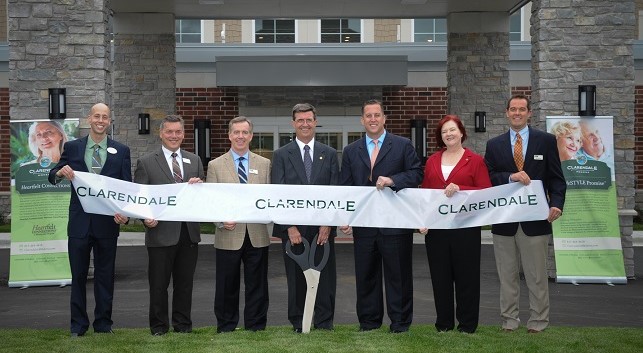 CHICAGO—Direct investment into US commercial real estate hit $553 billion last year, the most since 2007, and the seniors housing sector got its share. There were 514 institutional transactions closed and $18.7 billion in sales, a record-setting year and 4.5% higher than 2014, according to a new survey of professionals in seniors housing just published by CBRE. But there was a noticeable pullback in the fourth quarter, especially by REITs, and experts say that even though the sector will remain robust in the coming year, it will probably not see a big increase in investor activity. “We are going to see a lot of new units come online in 2016,” Bennett Johnson, a CBRE vice president for seniors housing and care, tells GlobeSt.com, and some investors may adopt a wait-and-see attitude. The National Investment Center says that at the end of 2015, developers had 48,903 units under construction, more than double the number under construction three years earlier. “Compared to the momentum we've seen in the last few years, there may be some slowdown.” Johnson and other CBRE researchers say the sector is entering what they call a “rational period” that will be characterized by steady prices. “We don't feel that the market has necessarily peaked,” he says, “but we also don't believe that cap rates will continue to go down like they did in the recent past.” CBRE sent its survey to more than 250 transaction professionals who specialize in the seniors housing sector. Of the respondents, 48% expect no change in cap rates in 2016. Of the remainder, 21% still expect to see some compression and 31% expect an increase. Part of the increased caution comes from some demographic challenges. Although the overall demographics in the US are very favorable to the long-term expansion of seniors housing, the average age of current residents is somewhere in the mid-80s, Johnson says. And with most of the giant baby boom generation still in their 60s, there are a number of years to go before many in this group will consider this type of housing as an option. Still, survey respondents express little doubt that seniors housing will stay robust in 2016 and beyond. Johnson points out that occupancy is at about 90%. And unlike the 1990s, when a building boom in the sector got out of hand, this time financial institutions and developers have proceeded in a disciplined manner and are making sure that experienced operators run the new properties. “The message of this report is not a negative one,” Johnson says. “We will continue to see strong interest in the sector.”
CHICAGO—Direct investment into US commercial real estate hit $553 billion last year, the most since 2007, and the seniors housing sector got its share. There were 514 institutional transactions closed and $18.7 billion in sales, a record-setting year and 4.5% higher than 2014, according to a new survey of professionals in seniors housing just published by CBRE. But there was a noticeable pullback in the fourth quarter, especially by REITs, and experts say that even though the sector will remain robust in the coming year, it will probably not see a big increase in investor activity. “We are going to see a lot of new units come online in 2016,” Bennett Johnson, a CBRE vice president for seniors housing and care, tells GlobeSt.com, and some investors may adopt a wait-and-see attitude. The National Investment Center says that at the end of 2015, developers had 48,903 units under construction, more than double the number under construction three years earlier. “Compared to the momentum we've seen in the last few years, there may be some slowdown.” Johnson and other CBRE researchers say the sector is entering what they call a “rational period” that will be characterized by steady prices. “We don't feel that the market has necessarily peaked,” he says, “but we also don't believe that cap rates will continue to go down like they did in the recent past.” CBRE sent its survey to more than 250 transaction professionals who specialize in the seniors housing sector. Of the respondents, 48% expect no change in cap rates in 2016. Of the remainder, 21% still expect to see some compression and 31% expect an increase. Part of the increased caution comes from some demographic challenges. Although the overall demographics in the US are very favorable to the long-term expansion of seniors housing, the average age of current residents is somewhere in the mid-80s, Johnson says. And with most of the giant baby boom generation still in their 60s, there are a number of years to go before many in this group will consider this type of housing as an option. Still, survey respondents express little doubt that seniors housing will stay robust in 2016 and beyond. Johnson points out that occupancy is at about 90%. And unlike the 1990s, when a building boom in the sector got out of hand, this time financial institutions and developers have proceeded in a disciplined manner and are making sure that experienced operators run the new properties. “The message of this report is not a negative one,” Johnson says. “We will continue to see strong interest in the sector.”Want to continue reading?
Become a Free ALM Digital Reader.
Once you are an ALM Digital Member, you’ll receive:
- Breaking commercial real estate news and analysis, on-site and via our newsletters and custom alerts
- Educational webcasts, white papers, and ebooks from industry thought leaders
- Critical coverage of the property casualty insurance and financial advisory markets on our other ALM sites, PropertyCasualty360 and ThinkAdvisor
Already have an account? Sign In Now
*May exclude premium content© 2025 ALM Global, LLC, All Rights Reserved. Request academic re-use from www.copyright.com. All other uses, submit a request to [email protected]. For more information visit Asset & Logo Licensing.








